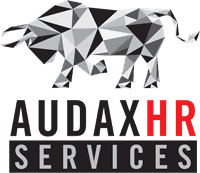I am typically an optimist. It’s not naivety. It comes from my belief in the good intentions, intelligence and bravery of people to mostly do the right thing. So, although I saw some worrying signals at the end of 2023 about what might lie ahead for 2024, I believe that you – dear reader – will do the right thing despite the temptation to find a quick fix and pay the price later. The worrying signals 1. Return to the office More and more companies are setting targets for getting employees back into the office. We have learnt that hybrid working has drawbacks when it comes to collaboration, sense of belonging, isolation, creativity, social connection, communication, and much more especially for certain employees and certain types of roles. For most of us, spending time with colleagues is important to our own sense of wellbeing and to getting our jobs done. In principle, I have nothing against encouraging people to work together in person. What saddens me is that the opportunity to permanently shift from a dressed-up form of command-and-control to a leadership style based on trust, adult-adult conversations, empowerment and greater self-management has not been realised. Many managers have struggled to know how to get stuff done unless they are in physical proximity to people. They never really trusted that their people weren’t slacking off at home. And they never understood that people will want to gather, despite the commute or the challenge of getting childcare/dogcare, if there is reason enough to do it. Instead, many companies are reverting to what they know – demanding that people are present in the shared workspace for a percentage of the time. Consultation has been minimal in many cases with vague data being thrown around about how unproductive people are at home. The office space itself has not been made more compelling. If you want people to leave the comfort of their homes you have to provide a better service – better internet, better tech, better coffee, great meeting and gathering spaces – not just a cubicle and a screen so staff can dial into meetings they could have joined from home. 2. Redundancies I’m also noticing concerning rounds of redundancy in some companies. Again, it’s not that redundancy is never necessary. Businesses need to shapeshift as markets change and, particularly with new technology (more on this later) some roles simply aren’t required. But I wonder how creative organisations are really being about how they handle this? It all feels rather 90s. The pace of change is so great now that businesses will have to consider their responsibility towards employees they no longer need. How do they bring in and let go of people in a way that aligns with their “People are our greatest asset” mantra? Do they owe it to their people to anticipate future skills demand and create opportunities within the business to develop people for those future skills? And if redundancy is inevitable, how do they minimise the terror that employees face, particularly at a time of spiralling costs of living? 3. GenAI This is huge. The 2023 World Economic Forum report into the impact of new technologies anticipated that 69 million jobs would be created, but there would be a decline of 83 million jobs in the next 5 years. Work that you spend most of your day doing will be better done by AI. So, what will you do instead? Again, being optimistic, I don’t think we’ve scratched the surface of what humans could be contributing to their organisation because we’ve spent so much of our time doing work better done by a machine. But unenlightened leaders could look at your workload and figure that, if AI can do 42% of it, they can get rid of 42% of their people. This would be a disaster for our society. We cannot leave governments and the welfare system to fix this problem. It is a problem made by business innovation and therefore it is a problem business should resolve. You need to put your imagination to this issue as a matter of urgency. Human beings have massive untapped potential to add value. It’s on you to work out how to access it so you can capitalize on the tech AND leverage the hitherto untapped value of your people. 4. Burnout and attrition Industrial Age thinking in a post-Industrial Age world has caused these issues (and more). We continue to work our people into the ground. Our expectations of them increase. Meanwhile, the security of their world decreases (costs spiralling, climate crisis, levels of distrust, a polarised society and geopolitical unrest, as examples). And people still need to pop over to Dad’s house to check he’s not fallen over, get to the gym, fix the plumbing so they can put their house on the market… all the normal stuff. Your people are really starting to struggle. They want to do their best work but this level of productivity is unsustainable. I anticipate even more burnout in 2024 – people requesting unpaid leave, people resigning with no new job to go to, people being off sick and people continuing to show up every day while their exhaustion and frustration bubble over into unprofessional behaviour at work. What’s the good news? The good news is that you can do something about all of this because it all has its roots in the same causes. True Empowerment The answers to these challenges are in the brains of the people in your business. You do not have to solve them and then sell that solution to them. Tell them what the business is facing. Give them the information you have and support them in finding out more. Give them the authority to come up with ideas, pilot those ideas and see what works and what doesn’t. They may not have all the skills or the confidence they need to do this yet, but they will only grow if they are given the chance to work those muscles. Live up to your values ‘Putting People First, Integrity, Doing What’s Right’ or whatever values your business has on its website should require tough conversations and there will sometimes be a price to pay. Not a price your people pay. A price the business is willing to pay to uphold those values. ‘Putting People First’ might mean directors take a pay cut. ‘Putting People First’ might mean investing in retraining people instead of making them redundant. ‘Putting People First’ might mean your EBIT goes down this quarter because you’re unwilling to squeeze your people more than you are already. Think long-term What we are going to see in 2024 isn’t a short-term issue which will magically right itself. These issues aren’t going away. And you can’t find a few extra efficiencies, or restructure, or command-and-control your way out of it. These are the early foreshocks of a major earthquake ahead. The business landscape will look radically different in 10 years. We have to jettison every vestige of Industrial Age management theory and create a whole new way of working with our human workforce. If anyone should make the time to do this thinking and engage others in it, it’s those of us in HR. Even if that is driven by self-preservation (your CTO, CFO or COO may believe your job could be done by a bot if you aren’t careful), prioritise long-term thinking and long-term decisions rather than quick fixes and conventional solutions. I have faith that there are enough HR professionals who see the writing on the wall and feel as I do that there are wonderful opportunities to create organisations that can thrive in these new and exciting times. And I’m hoping you are one of them. Interested in this topic? Read Is your culture in change-ready or change-sabotage mode?
This content was originally published here.



